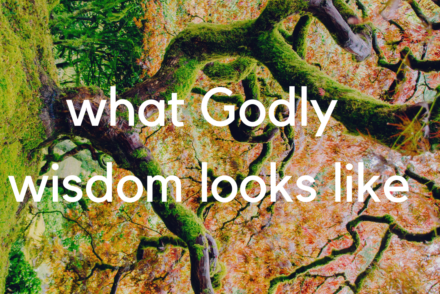Two weeks ago I wrote a post about how the structure of the modern church has set pastors up for inordinately high levels of depression, anxiety, and even suicide. Obviously pastors themselves have responsibility for self-care and openness in their struggles, but if the very culture and socio-physical structure of the church is pushing against mental and emotional health (and I’m convinced it is), that’s a problem that must be addressed.
The good news is that if the structure and culture of the church is a problem, it can be changed. That kind of change, however, requires intentionality. Organizational culture and structure doesn’t change by accident, particularly when it’s locked in place with the weight of hundreds of years of tradition. Here are five changes that I believe would free many pastors from unnecessary emotional and spiritual weight that drags them down.
Before listing the changes it’s worth noting – simply changing structure isn’t a guaranteed fix. There are many who have entered church leadership out of a need to perform or to be a savior figure, a drive that will inevitably destroy the one following it. Jesus is the savior. And, as Salem’s senior pastor Glen Stevens preached at his final sermon there yesterday, Jesus is the real senior pastor.
Five changes to free pastors
1. Share the pulpit frequently
The staple of most churches is the Sunday morning service, and central to that service is a 20-60 minute sermon, almost always preached by the senior pastor. When one individual is the sole (or almost sole) teacher of the entire congregation, they inevitably assume the position of a guru, wise-man, and savior figure, no matter how much they speak to the contrary. As was noted in my previous post, this was never Jesus’ intention, and being the guru or answer-man for a congregation of 500 or even just 50 people is a weight that no one other than Jesus can bear.
There’s often good reason for having the senior pastor be the preacher – doctrinal faithfulness, excellence, and the like. However, the cost outweighs the benefits. Far better to implement a model where there is shared preaching with a pool of several faithful church leaders taking turns preaching, even if it means lower quality speaking, some doctrinal slip-ups, and a few awkward moments. Churches like The Austin Stone are doing this well, but they are blessed to have a large enough staff that there are several full-time pastors.
For smaller churches that don’t have finances for multiple full-time pastors, the senior pastor can leverage his sermon preparation as opportunity for disciple-making, inviting two or three other potential teachers from the congregation to join him for a portion of the prep time to give them an opportunity to learn how to prepare and deliver a sermon. Once they have observed and learned for a time, the senior pastor can shift into a coaching role, guiding the developing preachers in their growth.
Sharing the pulpit frequently dramatically decreases the likelihood that people will look to the senior pastor as the one who tells them how to get close to God, minimize celebrity culture, and emphasize the crucial biblical truth that all of God’s people are priests, filled with and gifted by the Holy Spirit for ministering to each other and the world.
2. Shrink the congregation
The average person can sustain about 125 relational connections. Hence why so many churches cap out at about 100 people or so. Being the primary spiritual leader for 125 people is over the head of even the most extroverted and relationally gifted person. Thus finding ways to “shrink” your congregation can be a massive benefit for the pastoral staff.
There are several ways for this to be done. First, you can literally shrink the congregation as the missional movement has done by shifting the primary mode of church from a large Sunday gathering to smaller missional communities of 15-50 people, empowering and training communities to function as micro-churches. Alternatively, the church’s elders can be equipped and trained to be the primary pastoral figure for portions of the congregation, with the staff pastor simply playing the role of another elder. Or you can be radical and do like Jesus does and preach some stuff that drives people away (John 6:25-59 and elsewhere in the Gospels).
3. Slow the pace of ministry
The majority of pastors rarely take time off, largely because of the relentless press of Sunday services and the endless needs of their congregation. As several pastors I know have mentioned with a note of bitterness in their voice, it seems like every time they do take time off for a day with family or a vacation that’s exactly when their phones start ringing with urgent and seemingly impossible-to-ignore needs from their congregation. The previous two changes will help minimize this, but intentionally slowing the pace of ministry would also be a massively powerful shift in its own right.
Experiment with slowing your ministry pace. Cancel Sunday services for two weeks in a row or one week a month. My parent’s church has no service the first Sunday of each month, instead encouraging families to do church at home with others from the congregation as a way to connect more deeply. Andy Stanley’s churches (Northpoint) have historically taken the Sunday after Christmas off, giving the staff and volunteers much-needed rest after the intensity of the Christmas build-up. There are dozens of other ways to slow the pace. Cancel mid-week events during the summer. Cut back to one service during traditionally lower-attendance seasons. Shift small groups to meeting every other week instead of weekly. Take a few weeks and shorten Sunday services by a half hour, doing just worship and prayer and scripture reading. Get creative!
4. Set aside time off
Slowing the pace of ministry will, Lord willing, make setting aside intentional time off easier for the pastoral staff. However, time off should be built into the structure of the church itself. This could be done by the elders or deacons of the church requiring pastoral staff to take a Sabbath day each week and committing to pick up the slack for last minute ministry needs that come up that day.
Another incredibly positive practice is that of sabbatical. Ministry is a particularly relentless calling, involving emotional and physical intensity that’s found in few other careers. It would be wise for churches to implement longer periods of time off for their leaders, perhaps one month every five years or 2-3 months every 10 years for the leaders to completely disconnect from ministry.
5. Shift the set-up of the sanctuary
I put this point last because it’s perhaps the most radical, but also incredibly helpful. We shouldn’t underestimate the power of physical space in communicating expectations. The reality is that the sanctuary, with its lines of chairs or pews all facing toward a raised stage with an occasionally ornate pulpit makes it known to even a thoroughly unchurched first-timer that the person(s) on the stage are the ones who are to be looked up to (literally) and revered. They are the authority, and as the authorities they also bear the responsibilities. This physical structure implicitly communicates that, conversely, the congregation has neither authority or responsibility, or if they do it’s minimal, when it comes to life as the church.
I won’t offer specific recommendations for shifting the space you meet in, but we should at the very least be aware of the fact that our spaces communicate almost as much as our preaching and music. We must make sure the way they are structured is saying that it should be saying.
Shifting to what?
The above five changes to the structure and culture of church, I believe, would over time facilitate a significant decrease in some of the mental and emotional issues that are so prevalent among pastors. Ultimately, however, the shift that must be made is that of the people of God owning who they truly are as brothers and sisters in Christ rather than abdicating the spiritual leadership and “work” to a priestly class of those employed by the church organization.
Jesus is the primary leader of his people, and every one of us – whether a brand new believer or a pastor of a church of 5000 who’s been in ministry for forty years – have the same standing and access to God. Let’s start living like it. As we do so it will bring health to the church and hope to the world.




No Comments